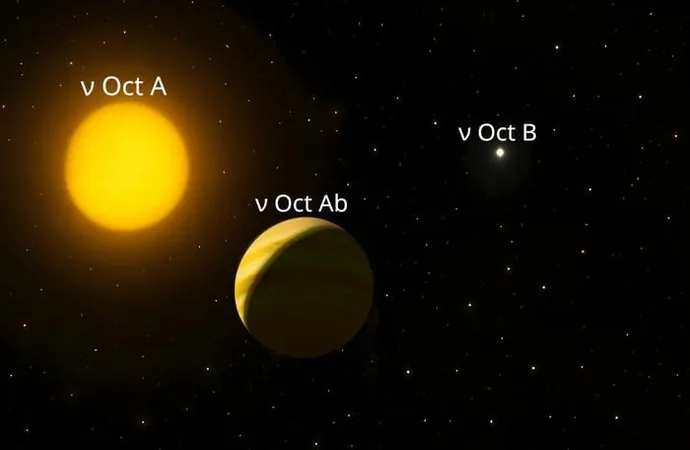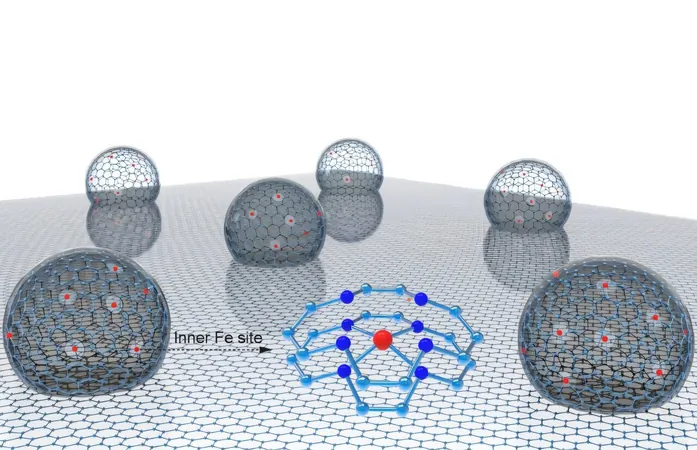
Unveiling the Cosmic Spectacle: Webb Telescope Reveals the Butterfly Nebula's Secrets
2025-08-29
Author: Noah
A Glimpse into Cosmic Beauty
The James Webb Space Telescope has unveiled breathtaking insights into one of the Cosmos' most wondrous phenomena: the Butterfly Nebula. Located a staggering 3,400 light-years away in the constellation Scorpius, this vibrant cloud of gas and dust signifies the final gasps of a dying star.
What is a Planetary Nebula?
Often mistaken for something related to planets due to their round, puffed appearance, planetary nebulae are anything but. These magnificent structures emerge when a star similar to our Sun sheds its outer layers, offering a glimpse into the fate that awaits our star.
Wings of the Butterfly Nebula
Unlike traditional spherical nebulae, the Butterfly Nebula, officially known as NGC 6302, features striking 'wings'. These wings result from the deadly yet beautiful ejection of gases in two opposing streams. A dense band of dust forms the body of the butterfly, shielding the dying star’s light from visible telescopes.
Webb's Infrared Vision
The James Webb Space Telescope, renowned for its infrared capabilities, penetrates this dust veil, revealing the heart of the nebula. Astronomers utilized Webb's Mid-Infrared Instrument (MIRI) to peer at the hidden stellar core, which radiates at a staggering 220,000°C (396,030°F) — one of the hottest central stars within any planetary nebula in our galaxy.
A Nebula Awash in Colorful Complexities
The intense heat emanating from this star charges the surrounding gases, igniting the nebula in a vibrant spectacle of colors. Webb's observations additionally shed light on the dust’s composition, detecting crystalline silicates akin to quartz, alongside unexpectedly large dust grains that have evolved over millennia.
Elemental Discoveries and Cosmic Chemistry
Beyond the dusty center, Webb uncovered layered shells of diverse elements like iron and nickel, ejected in jets of cosmic material. Significantly, astronomers also identified carbon-rich molecules known as polycyclic aromatic hydrocarbons (PAHs), intriguing clues found previously only in earthly soot and smoke. Their discovery within the Butterfly Nebula could be groundbreaking, indicating the formation of PAHs within an oxygen-rich environment.
The Cosmic Circle of Life
These remarkable findings illustrate how dying stars like those in the Butterfly Nebula play a pivotal role in enriching our galaxy with vital dust and complex molecules—essential ingredients that eventually give rise to new stars and planets. As we continue to explore the heavens, the Webb Telescope opens new windows to the mysteries of cosmic evolution.









 Brasil (PT)
Brasil (PT)
 Canada (EN)
Canada (EN)
 Chile (ES)
Chile (ES)
 Česko (CS)
Česko (CS)
 대한민국 (KO)
대한민국 (KO)
 España (ES)
España (ES)
 France (FR)
France (FR)
 Hong Kong (EN)
Hong Kong (EN)
 Italia (IT)
Italia (IT)
 日本 (JA)
日本 (JA)
 Magyarország (HU)
Magyarország (HU)
 Norge (NO)
Norge (NO)
 Polska (PL)
Polska (PL)
 Schweiz (DE)
Schweiz (DE)
 Singapore (EN)
Singapore (EN)
 Sverige (SV)
Sverige (SV)
 Suomi (FI)
Suomi (FI)
 Türkiye (TR)
Türkiye (TR)
 الإمارات العربية المتحدة (AR)
الإمارات العربية المتحدة (AR)